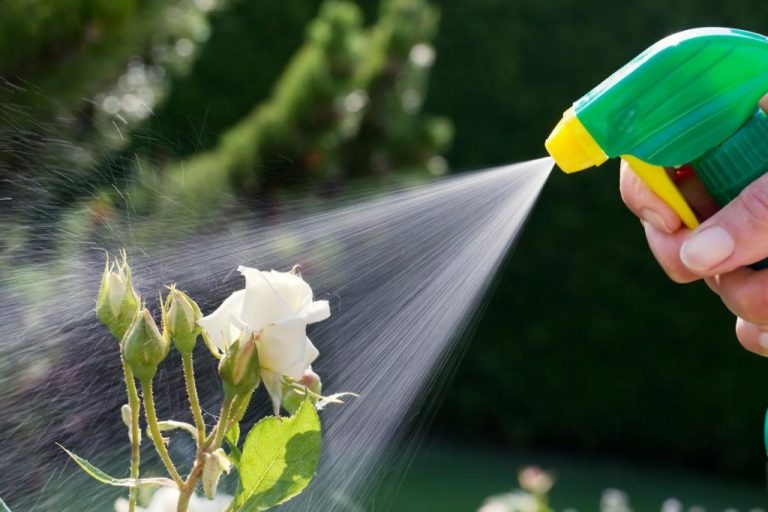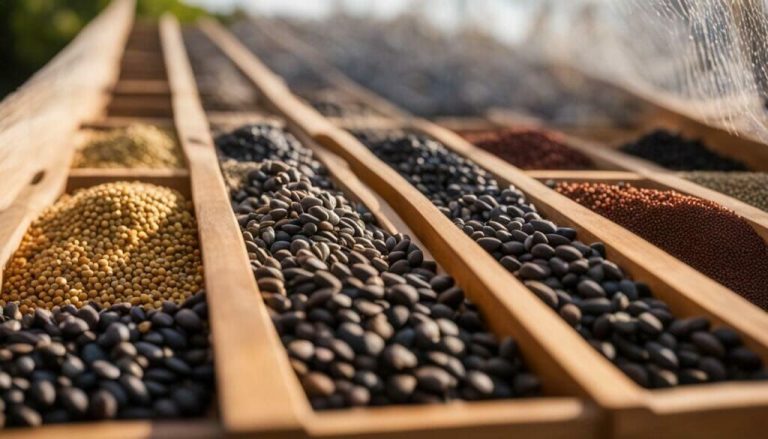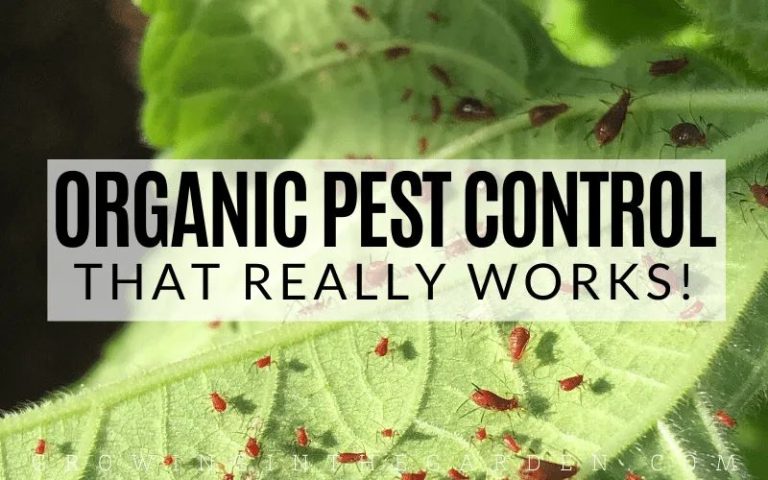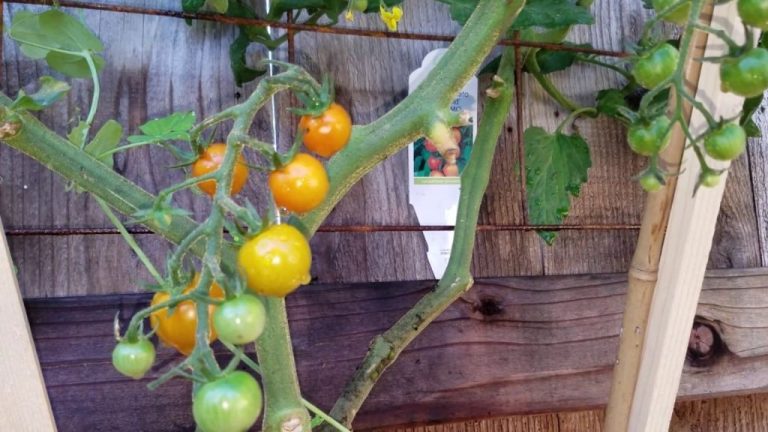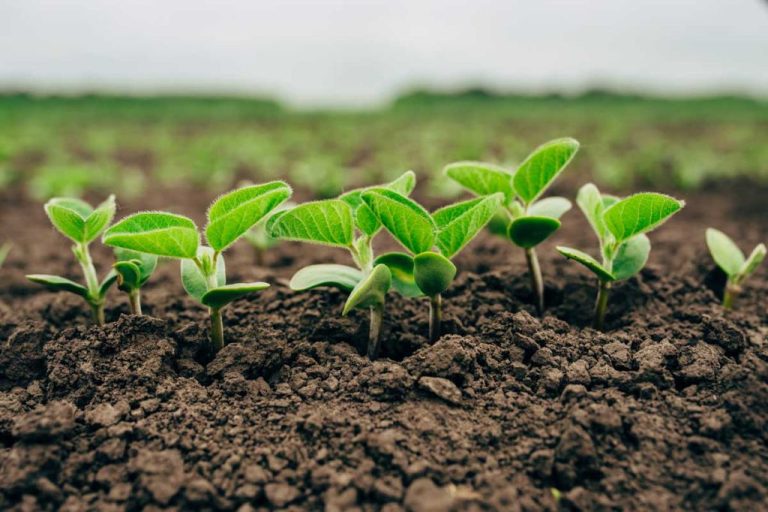Organic Hydroponic Gardening: Growing Without Soil
Hydroponics is a method of growing plants without soil, using mineral nutrient solutions in a water solvent. Organic hydroponics follows the principles of hydroponics while using only organic certified inputs. The roots of plants are supported using different types of growing media like coconut coir, perlite, vermiculite, clay pellets, etc. and fed organic certified liquid nutrients.
While soil-less cultivation techniques have been used for centuries, modern hydroponics was pioneered in the 1930s by W.F. Gericke at the University of California. He coined the term hydroponics from the Greek words “hydro” meaning water and “ponos” meaning labor. Hydroponics offers many benefits over traditional soil gardening like faster growth rates, higher yields, less water usage, no weeding or tilling needed, and precise control over nutrients.
Organic hydroponics emerged in the 1990s as a sustainable approach, using only OMRI approved fertilizers and natural growing media. It combines the advantages of hydroponics with organic principles. Plants get nutrients efficiently while avoiding synthetic chemicals. Organic hydroponic systems qualify for organic certification in most regions.
Hydroponic Systems
There are several different types of hydroponic systems used to grow plants without soil. Each has its own advantages and disadvantages.
Nutrient Film Technique (NFT)
The nutrient film technique (NFT) is one of the most popular hydroponic systems. Plants are placed in channels or pipes with a continuous flow of nutrient solution. The roots hang down into the channel and are exposed to a thin film of nutrients and oxygen. The advantages of NFT systems are high oxygen levels for rapid growth and ease of monitoring root development. However, they require frequent monitoring of the flow rate and EC/pH levels. Stress can occur quickly if either drops (Hydroponics Euro).
Deep Water Culture (DWC)
Deep water culture (DWC) systems suspend plants above a reservoir of oxygenated nutrient solution. Air pumps continuously provide oxygen. The main advantage is the high oxygen levels that promote very rapid growth. However, maintaining stable oxygen, EC, and pH levels can be challenging. Mechanical failures can also rapidly stress plants (iDoo Hydroponics).
Drip Irrigation
In drip irrigation systems, a timer releases nutrient solution from above onto the base of each plant. Excess drains back into the reservoir. The advantage is precise control of nutrients and moisture. However, emitters can clog over time. Drip systems also tend to be more expensive to set up.
Aeroponics
Aeroponic systems spray a mist of nutrients onto the exposed roots at regular intervals. This creates a highly oxygenated environment for very fast growth. However, aeroponic systems require more maintenance, emitters can clog, and hardware failures can rapidly stress plants.
Growing Media

When growing hydroponically, plants don’t use soil as a rooting medium. Instead, growers use different non-soil medias that provide both support for plants and air spaces for roots to access oxygen. Some of the most common hydroponic growing medias include:
Coco Coir: This is made from the fibrous husks of coconuts. It holds water well while still providing air pockets. Coco coir has good drainage and is resistant to compression.
Perlite: This is a volcanic rock that has been superheated and popped like popcorn. It creates many air pockets while also absorbing some water. Perlite is very lightweight.
Vermiculite: This is a mineral that expands when heated. It can hold a lot of water while still maintaining structure. Vermiculite provides both moisture retention and aeration.
Expanded Clay Pellets: These are made by firing and expanding clay in a kiln. The pellets are porous, neutral in pH, and provide both air and water retention. They are reusable and durable.
The ideal hydroponic growing medium varies for different plants. Many mixes combine medias like perlite, vermiculite and coco coir to create an optimal environment. Testing different combinations allows growers to customize the medium to their plants.
Nutrient Solutions
The nutrient solution provides plants with the essential macro and micronutrients they need in hydroponic systems. Since the aim is organic hydroponics, the nutrients sources should also be organic.
Some common organic nutrient sources include:
- Compost teas
- Worm castings
- Seaweed extracts
- Fish emulsions
- Manures
- Molasses
These can be used individually or blended together to create a complete organic nutrient solution. Many pre-made organic hydroponic nutrients are also available for purchase.
When mixing your own nutrients, aim for an electrical conductivity (EC) of 1.2-2.0 and a pH between 5.5-6.5 for most plants. EC measures the total dissolved salts, which indicates the overall nutrient strength. The nutrient solution’s pH greatly impacts nutrient availability.
The EC and pH levels should be regularly monitored and adjusted to keep plants healthy. Organic nutrients tend to have lower EC levels than synthetic options but can still meet all of a plant’s nutritional needs.
Suitable Plants
When selecting plants for a hydroponic system, it’s important to choose varieties that will thrive without soil. Generally, the best options are fast-growing plants that need ample moisture and nutrients. Here are some of the top fruits, vegetables, herbs and flowers to grow hydroponically:
Fruits and Vegetables
Leafy greens like lettuce, spinach and kale grow extremely well hydroponically. Other great veggie choices include tomatoes, peppers, cucumbers, zucchini, beans, peas, radishes, beets and carrots. For fruits, strawberries, blueberries and melons produce excellent hydroponic yields.
Herbs
Herbs that flourish in hydro systems include basil, mint, oregano, thyme, sage, parsley, chives and cilantro. The constant moisture and nutrients lead to abundant growth.
Flowers
Flowers like marigolds, pansies, petunias and snapdragons make beautiful hydroponic plants. Their roots absorb nutrients efficiently without soil. Orchids also thrive with hydroponic care.
Focusing on these edible and ornamental plants will lead to a bountiful hydroponic garden full of fresh flavor and color.
Seed Germination
Seeds can be germinated for hydroponic systems using several methods. Two common methods are rockwool cubes and rapid rooters. Rockwool cubes provide support, moisture, and aeration for seeds to begin sprouting roots. The cubes can be pre-soaked in a solution of water and nutrients before inserting seeds. Rapid rooters are made of compressed peat and also provide moisture and support. Seeds are placed in the holes of the rooters and watered from the bottom as needed.
Using a seedling heat mat can help maintain optimal temperatures of 70-80 F for germination. The gentle bottom heat accelerates the process by 1-2 weeks compared to room temperature. The mat should be placed under propagating trays full of rockwool cubes or rapid rooters. A temperature probe can help monitor the temperature. It’s important not overheat the seeds. The mat, cubes/rooters and seeds can be covered with a humidity dome to retain moisture. Once sprouted, the dome can be removed.
For more details on hydroponic seed starting methods see: https://www.goplanter.com/hydroponic-mint-how-to-grow-your-own/ and https://www.goplanter.com/hydroponic-basil-for-beginners-with-videos/
Transplanting
Knowing when to transplant seedlings from the germination medium into the hydroponic system is important for the health of plants. Generally, seedlings should be transplanted when they reach 3-4 inches tall and have developed their first true leaves, typically 2-3 weeks after germination.
Before transplanting, it’s best to prepare the seedlings by slowly decreasing the amount of water provided over 1 week. This helps prevent transplant shock. The germination cubes or plugs should be moist but not soaking wet. Gently separate seedlings trying to avoid damage to the stem and roots. Plant each into the hydroponic growing medium, whether it’s rockwool, expanded clay pellets, coconut coir or something else, ensuring the stem is buried just up to the seed leaves.
For the first few days after transplanting, provide high humidity, be sure to not let plants dry out, and avoid strong lighting. Gradually acclimate the seedlings over 1-2 weeks to the normal conditions in your hydroponic system. With proper transplant timing and care, seedlings will establish healthy root systems and continue growing vigorously in the hydroponic environment.
Sources:
https://theplantbible.com/when-to-transplant-seedlings-hydroponics/
https://www.lettucebefarmers.com/when-to-transplant-seedlings-hydroponics/
Lighting
Proper lighting is crucial for hydroponic plants to thrive. Plants require light for photosynthesis, the process by which they convert light energy into chemical energy to fuel their growth. There are two main options for lighting hydroponic systems – natural sunlight or artificial grow lights.
Natural sunlight is an excellent free source of light for hydroponics. However, relying solely on the sun has limitations. Day length, weather, seasons, and location can impact sunlight availability. Supplementing with artificial lights allows growers to provide consistent optimized lighting conditions year-round.
LED grow lights have become a popular artificial lighting choice for hydroponic gardens. LEDs are energy efficient, producing little heat while emitting light spectrums beneficial for plant growth. Full-spectrum LED grow lights provide a balanced light composition ideal for photosynthesis (source). With LED grow lights, factors like brightness, color, and timing can be precisely controlled to maximize yields.
In most hydroponic setups, a combination of natural and supplemental artificial light works best. While the sun provides free lighting during the day, LED grow lights can extend lighting hours and optimize the light spectrum for hydroponic plants to thrive.
Pest Management
Pests can be a major issue in hydroponic systems, as the enclosed environment provides ideal conditions for certain insects and diseases to thrive. However, there are effective organic methods to control pests without the use of harsh chemicals.
Some common pests in hydroponics include aphids, whiteflies, fungus gnats, thrips, and spider mites. Aphids and whiteflies suck the sap from plants, leaving them weakened. Fungus gnats live in growing media and spread diseases. Thrips and spider mites feed on leaves and stems, damaging plants (GTG Hydroponics).
Rather than reaching for chemical pesticides, organic sprays can be used to control pests. Insecticidal soaps, neem oil, and garlic-chili sprays are effective options. These sprays work by smothering or repelling insects. Multiple applications are often needed. It’s best to spray early, before pests multiply and infest plants (Pinterest, 2022).
Beneficial insects like ladybugs, lacewings, and predatory mites can also be introduced to eat pests. These natural predators provide biological control and a sustainable way to reduce pest populations. They are compatible with organic sprays (Gardensavvy, 2022).
With vigilant monitoring and a combination of organic sprays and beneficials, hydroponic gardeners can keep pests at bay without toxins.
Harvesting & Storage
When it comes to harvesting hydroponic plants, there are a few key considerations for maximizing flavor and shelf life. Unlike soil-grown plants, hydroponics allows you to harvest crops year round since you control the environment.1 This means you can enjoy fresh produce no matter the season. The ideal time to harvest is when plants reach their peak ripeness and flavor profile.2 For leafy greens and herbs, this is usually around 3-5 weeks after germination. Fruiting plants like tomatoes take 8-12 weeks. Check plant variety guides for more specifics.
Proper post-harvest storage is also key. Leafy greens and herbs keep best when washed, dried, and stored in air-tight containers in the refrigerator. Fruiting vegetables should be held at room temperature until ripe, then stored in the refrigerator. Proper storage slows down the ripening process and enzymatic breakdown to extend shelf life. With the precise control over growing conditions hydroponics provides, you can maximize flavor and enjoy harvests for up to 2 weeks when stored properly.

